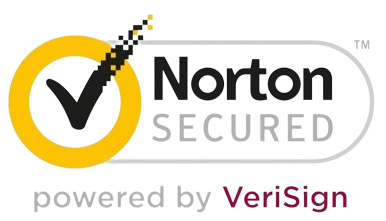Do Irish have their own language? It’s a question that often arises among curious learners, travelers, and even some Irish people themselves. The short answer is yes—the Irish do have their own language, called Gaeilge (or Irish Gaelic). It’s one of the oldest written languages in Europe, deeply tied to Ireland’s history, culture, and identity.
In this post, we’ll explore the roots of the Irish language, its current status, the challenges it has faced, and how it’s being revived today through modern tools—including AI-powered resources from Gaeilgeoir AI.
What Is the Irish Language?
Irish, or Gaeilge, is a Celtic language native to Ireland. It is a member of the Goidelic branch of the Celtic language family, which also includes Scottish Gaelic and Manx. While English is now the dominant language in Ireland, Irish remains the first official language of the Republic of Ireland, protected by the Constitution and used in government, education, and media.
Gaeilge is not just a historical relic. It’s a living language spoken daily in communities across Ireland known as the Gaeltacht. And thanks to a growing movement to preserve and promote Irish culture, more and more people—both in Ireland and abroad—are learning it today.
A Brief History of the Irish Language
Irish has been spoken for over 2,000 years and was once the dominant language across the island. During the medieval period, it was used in legal documents, literature, and education. However, centuries of colonization, famine, and emigration led to a sharp decline in native speakers.
By the 19th century, English became the language of economic opportunity and public life, while Irish was often discouraged or outright suppressed. Despite these setbacks, a cultural revival in the late 19th and early 20th centuries helped reestablish Irish as a symbol of national identity.
Today, the answer to “Do Irish have their own language?” comes with a proud yes—but also a sense of urgency to keep Gaeilge thriving.
For a deeper historical perspective, check out our Ancient Irish Language Guide.
Is Irish Still Spoken Today?
Yes, Irish is still spoken today, though the number of daily speakers is relatively small. According to the Central Statistics Office (CSO) in Ireland, over 1.7 million people say they can speak Irish, though only around 70,000 use it daily outside of school. That said, Irish language schools, radio stations, and TV channels like TG4 have helped keep the language vibrant.
The Gaeltacht regions, primarily located in counties Galway, Kerry, Donegal, and Mayo, are areas where Irish is the community’s first language. However, learners are emerging from every corner of Ireland—and around the world—thanks to online resources and communities.
Why Learn Irish Today?
Irish is more than a means of communication; it’s a connection to heritage, culture, and identity. Learning Gaeilge allows you to:
- Explore Irish mythology, poetry, and storytelling in their original form
- Understand the deeper meaning behind Irish place names and expressions
- Connect with Irish-speaking communities both locally and globally
- Participate in the cultural revival of a language once endangered
For many, answering “Do Irish have their own language?” is just the beginning. The next question becomes: “Can I learn it?”
The answer is absolutely. And you don’t have to do it alone.
Common Misconceptions About the Irish Language
1. “Irish is just a dialect of English.”
False. Irish is a completely separate language with its own grammar, vocabulary, and syntax. It’s not related to English and predates it by centuries.
2. “Nobody speaks Irish anymore.”
Also false. While daily usage is limited, there are thriving communities and a growing number of learners and enthusiasts, both in Ireland and worldwide.
3. “Irish is impossible to learn.”
It may seem tricky at first, especially with its unique sounds and sentence structure, but tools like Gaeilgeoir AI make it accessible and fun for everyone.
Want to explore more common challenges? Read our article on Common Mistakes in Irish.
Fun Facts About the Irish Language
- The word “smithereens” comes from the Irish smidiríní, meaning small fragments.
- Irish was one of the earliest written European languages, using Ogham script.
- The word “galore” is derived from go leor, meaning “plenty”.
- There is no word for “yes” or “no” in Irish—you answer with the verb.
- Irish is one of 24 official languages of the EU.
Discover more intriguing terms in our Cool Irish Words to Know post.
Ways to Start Learning Irish Today
Here are a few practical steps you can take if you’re ready to start learning Irish:
- Use Gaeilgeoir AI for structured, personalized lessons.
- Listen to Irish music or watch Irish-language films and shows on TG4.
- Label everyday items in your home with their Irish names.
- Join an online or local Irish language group.
- Practice a few minutes daily using digital flashcards or our Daily Practice Plan.
- Learn greetings and expressions with our Basic Irish Conversation Guide.
Even five minutes a day adds up over time. Start small, stay consistent, and enjoy the process.
Conclusion: Yes, the Irish Have Their Own Language—And You Can Learn It
To answer the question, “Do Irish have their own language?”—absolutely. That language is Gaeilge, a resilient and beautiful Celtic tongue that continues to evolve with the people who speak and cherish it.
Whether you’re Irish by birth, heritage, or heart, learning Irish opens doors to culture, community, and history. And with platforms like Gaeilgeoir AI, there’s never been a better or easier time to begin your journey.
Join the movement. Reconnect with Gaeilge.
👉 Sign up for a free trial of Gaeilgeoir AI and become part of the future of the Irish language.
Related Reading:


